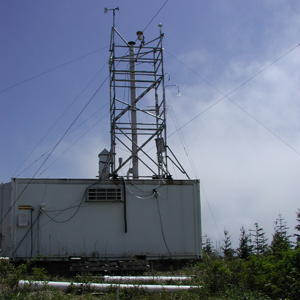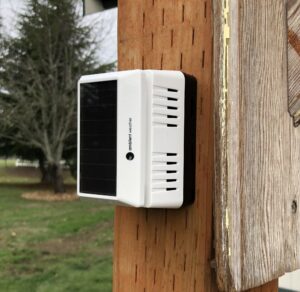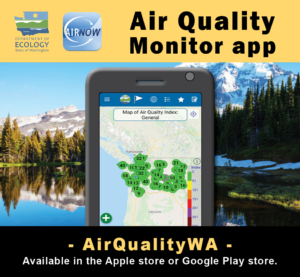
Personal weather stations have been available for a couple of decades and they now dot neighborhoods around the country, usually linked via a public website such as Weather Underground (wunderground.com). More recently, home-based air quality monitoring devices have become affordable and effective. There are several options for Personal Ambient Air Monitoring Devices (you can see a round-up of some of the more common ones here). But the Purple Air device has become the front-runner ambient air monitoring device in the world of Citizen Science.

The Purple Air devices require a basic power source and a Wi-Fi connection, but once operating, the baseball-sized devices are essentially maintenance-free data-gathering devices. However, the data does need a slight adjustment. Purple Air PM2.5 data track extremely well with the federal reference and federal equivalence air monitors, but they consistently overpredict PM2.5 by a factor of 2(+/- 0.5). The federal Environmental Protection Agency (EPA) has developed a correction factor for the Purple Air sensors. You can apply this correction directly on the Purple Air map or visit fire.airnow.gov where the correction has been automatically applied. This is a national air quality map developed by EPA, incorporating government-operated PM2.5 monitors (circles), corrected Purple Air data (squares), and temporary air monitors (triangles).
Our own Air Monitoring program here at Olympic Region Clean Air Agency (ORCAA) makes use of Purple Air devices alongside our traditional AQ monitoring devices. The Purple Air devices can be deployed quickly and affordably to extend an existing monitoring network, or to target potential problem areas in situations like local wildfires, or other air quality events. ORCAA also uses the devices during “saturation studies” which check the suitability of sites for our permanently positioned AQ stations as a county-wide reference. Previous saturation studies required the use of multiple large, expensive monitoring devices set up at just a handful of locations around the target county. But moving forward, ORCAA staff will deploy multiple Purple Air devices, as well as tap into the existing Purple Air network of privately deployed devices to evaluate siting options.
Installing a new Air Quality Monitoring Sensor
 Folks who plan to join the Citizen Science movement and deploy their own ambient air monitoring stations should consider a few key criteria before setting up their station.
Folks who plan to join the Citizen Science movement and deploy their own ambient air monitoring stations should consider a few key criteria before setting up their station.
Depending on your sensor’s power requirements, you will typically install it on the outside of your house near a power outlet. Some sensors incorporate solar panels as power sources, providing more options on location.
Do NOT install your sensor near:
- A chimney
- Dryer vent
- Water heater exhaust
- Gas or air vent
Air from a vent or chimney blowing on your sensor will prevent it from reading the actual air quality outside your home.
Do install your sensor under a roof overhang to help protect the electronics from blowing rain and debris or snow accumulation during extreme weather events.
The EPA provides additional guidance on siting your personal air quality monitor. You can find that information here.


